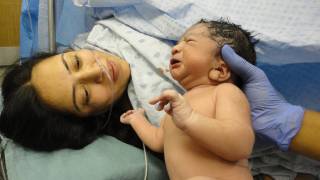Rotavirus Vaccines Are Very Effective

The implementation of the rotavirus vaccination program has markedly reduced the prevalence of rotavirus disease in the United States, says the Centers for Disease Control and Prevention (CDC).
In a new report, the CDC says all post vaccine-era seasons from 2007–08 to 2017–18, rotavirus activity consistently fell below the 2000–2006 baseline, and seasons were shorter in duration.
This finding from the National Respiratory and Enteric Viruses Surveillance System (NREVSS) dataset further attests to the long-term benefits of the rotavirus vaccination program.
Some of the observed changes in rotavirus activity that occurred after vaccine introduction could be due to concurrent changes in rotavirus testing practices as PCR-based multi-pathogen detection assays are increasingly used.
Although this shift in testing practices might explain some of the declines observed in the total number of tests performed and the number of positive tests, the substantial reductions in the proportion of rotavirus tests that were positive, supports the attribution of the declines to the effects of vaccination.
Introduction of rotavirus vaccine has also modified the seasonality of rotavirus disease in the USA.
However, rotavirus vaccines will not prevent diarrhea caused by other viruses.
There are 2 very effective, approved rotavirus vaccines; Rotarix and RotaTeq.
- RotaTeq (RV5) is given in 3 doses at ages 2 months, 4 months, and 6 months,
- Rotarix (RV1) is given in 2 doses at ages 2 months and 4 months.
These vaccines help prevent approximately 40,000 to 50,000 hospitalizations annually in the United States, says the CDC.
Since rotavirus vaccine introduction, coverage has slowly increased and completed coverage has plateaued at approximately 70 percent.
The lower coverage of rotavirus compared with other childhood vaccines might be explained in part by the fact that rotavirus vaccine does not offer the same opportunity for a catch-up, because the first dose must be given by age 15 weeks, and the series must be completed by age 8 months.
The biennial trend observed in the United States could be attributed to this low vaccination coverage, with the number of susceptible children accumulating in low rotavirus activity years, resulting in a higher number of susceptible children and a subsequent rotavirus outbreak during the following season.
Countries that rapidly achieved and maintained rotavirus vaccination coverage of up to 95 percent, such as the United Kingdom, have experienced a sustained decline in rotavirus activity, without the biennial trend observed in the USA.
As of May 2019, research published by the Academy of Pediatrics found only 71 percent of the infants were fully immunized against rotavirus.
And, 14 percent of these children had not received any rotavirus vaccination.
As vaccination coverage and on-time vaccination continue to improve in the USA, the seasonality of rotavirus disease can be monitored to see whether the biennial trend continues.
Recent rotavirus news:
- Diabetes Risk Reduced With Rotavirus Vaccination
- Why Are Children ‘Missing’ Rotavirus Vaccinations?
- Rotavirus Vaccinations Create ‘Herd-Immunity’
Rotavirus disease is most common in infants and young children, but older children and adults can get it too. People with this disease shed a lot of rotavirus in their stool.
If you get rotavirus in your mouth, you can get infected and sick. This can happen when you put your unwashed hands or a contaminated object, food, or liquid in your mouth.
Once you’ve been exposed, it takes about 2 days for symptoms to appear. The most common symptom is diarrhea. Which can lead to severe dehydration, hospitalization, and death, says the CDC.
The findings in this report are subject to at least three limitations.
First, aggregate NREVSS data are reported, without demographic or clinical characteristics, precluding examination of these characteristics.
Second, these data were collected from a passive surveillance system composed of a convenience sample of laboratories and might not be representative of all those in the United States.
Finally, because rotavirus testing does not affect clinical management (which focuses on rehydration and syndromic management), testing practices vary from site to site and year to year, which might affect data comparability.
However, NREVSS data have advantages, including the ability to describe trends in rotavirus activity in the United States in a timely fashion. In addition, NREVSS data have consistently aligned with rotavirus-related U.S. hospital discharge data and active surveillance data.
In summary, the CDC says ‘to maximize the public health impact of rotavirus vaccination, efforts to improve coverage and on-time vaccination should continue.’
Vaccines, like any medicine, can have side effects, says the CDC. You are encouraged to report negative side effects of vaccines to a healthcare provider or the CDC.
Our Trust Standards: Medical Advisory Committee
























